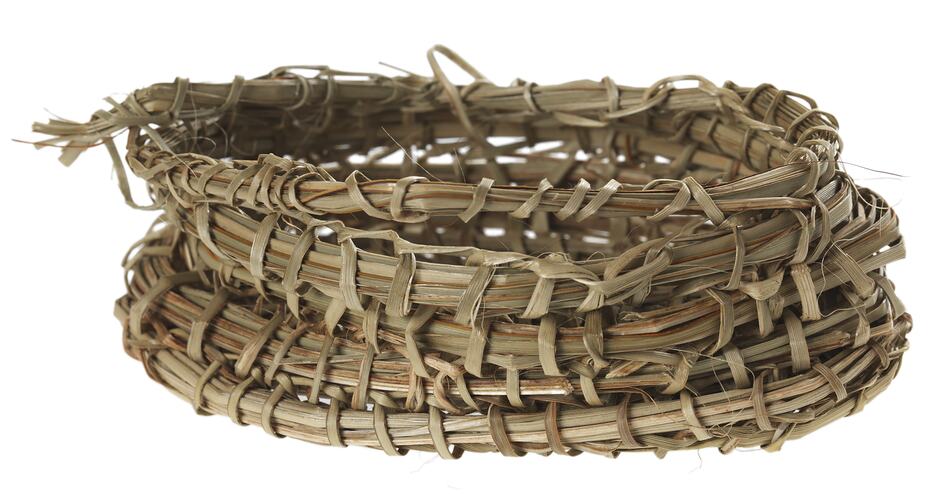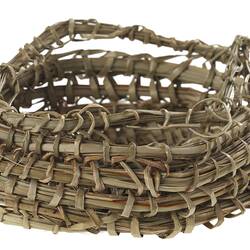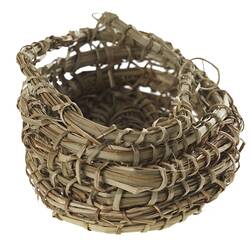Summary
Mikaela Rose Cottingham is from the Wurundjeri clan and was inspired to create this binak (basket) when she was part of the My People, Culture and Country project at Melbourne Museum in 2010. This project supported Indigenous students connecting with their culturral heritage and in developing an exhibtion. During the development of this exhibtion Mikaela learnt to coil weave in a workshop at Bunjilaka Aboriginal Cultural Centre and after studying some of the historical Victorian baskets in the Museums Victoria collection.
Mikaela says the basket'...was just a quick, fun little thing I made. At one of the workshops we did for this project we learnt how to do traditional weaving. I picked it up really quickly and made a little basket. Then when I went home, I tried out some different styles of weaving and made a bracelet".
Local Name
Binak
Physical Description
This Binak or basket is made from grass fibres using the coiled bundle technique that is used through out the South East of Australia and has been used for thousands of generations.
Significance
The addition of Mikaela's first basket to the Museum Victoria collection recognises the significance of this cultural continuity and that weaving is very much a part of the living culture of Koorie (Victorian Aboriginal people) Victoria today. First Peoples of south-eastern Australia have practiced the coiled basketry technique for thousands of years. Women have been weaving baskets, belts, mats, eel traps, fish scoops and other such cultural material teaching these techinques through over two thousand generations. Weaving is an important part of maintaining cultural histories and skill and is continued throughout the south east today.
More Information
-
Object/Medium
Basket
-
Maker
-
Cultural Groups
-
Locality
-
Date Produced
-
Fully Extended
150 mm (Length), 100 mm (Width), 45 mm (Height)
-
Classification
-
Date Made
-
Maker
-
Clan/Language Group
-
Place Made
-
Indigenous Region
-
Keywords
-
Type of item
-
Discipline
-
Category
-
Collecting Areas





